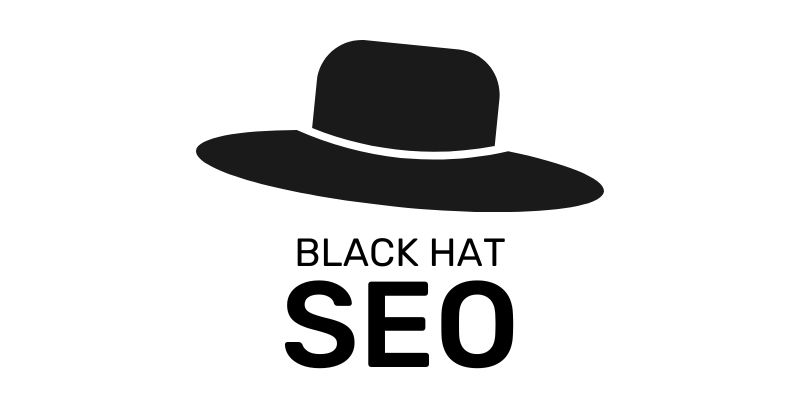Search engine optimization (SEO) is essential for visibility in today’s digital world. But how you go about achieving higher rankings can determine whether your success is short-lived or sustainable. In SEO, much like in old Western movies, there’s a stark contrast between the heroes and the villains—and even a murky middle ground.
These distinctions are encapsulated in the terms White Hat, Black Hat, and Gray Hat SEO.
Let’s explore what each of these terms means, why they matter, and how they shape the strategies professionals use in search marketing.
Origins of the Hat Terms
The use of “white hats” and “black hats” originated in 1920s Western films, where heroes traditionally wore white hats and villains wore black. It was a visual shorthand to help audiences instantly identify good and evil characters.
Over the decades, these labels made their way into various fields—most notably cybersecurity and SEO.
In SEO:
- White Hat SEO represents ethical optimization.
- Black Hat SEO represents manipulative or deceitful tactics.
- Gray Hat SEO falls somewhere in between.
Understanding these categories is vital because they influence the risk, rewards, and reputation tied to your SEO practices.
What Each Hat Represents
A. What Is White Hat SEO?
White Hat SEO involves tactics that align with the guidelines set by search engines, particularly Google’s Webmaster Guidelines.
These practices are ethical, sustainable, and user-focused. They aim to improve user experience and provide real value while helping websites rank well.
🔹 Examples:
- Creating high-quality, original content that answers users’ queries
- Optimizing site speed and mobile friendliness
- Using descriptive, keyword-researched meta tags
- Internal linking to aid site navigation
According to Ahrefs, content that ranks in the top 3 results of Google often contains 2,000+ words and earns natural backlinks from over 100 domains. These are typical results of a White Hat SEO strategy.
B. What Is Black Hat SEO?
Black Hat SEO uses manipulative or deceptive techniques that violate search engine guidelines to gain higher rankings—fast.
These methods often focus on exploiting weaknesses in search engine algorithms rather than creating value for the user.
🔹 Examples:
- Cloaking: Showing different content to users and search engines
- Keyword stuffing: Unnatural use of keywords
- Private Blog Networks (PBNs)
- Buying links or participating in link schemes
- Scraping content from other websites
- Doorway pages: Pages designed solely to funnel users to another page
Important Note:
These techniques can work—sometimes very effectively—but they carry a high risk of manual actions or even de-indexing from search engines.
Legal Perspective:
Most Black Hat tactics are not illegal, but practices like hacking for backlinks or injecting malware clearly cross into criminal activity.
C. Role of Search Engines as the De Facto Authority
There is no international governing body for SEO. Instead, search engines themselves act as the regulators.
Each engine—particularly Google and Bing—sets guidelines that website owners and SEO professionals are expected to follow.
🔹 Google’s Quality Guidelines include:
- Avoiding automatically generated content
- Not participating in link schemes
- Preventing sneaky redirects or hidden text
- Avoiding scraped content
Algorithm Updates Reflect These Values:
- Google Panda (2011): Targeted thin content
- Google Penguin (2012): Cracked down on link schemes
- Google Payday (2013): Aimed at spammy queries and sites
These updates show the ongoing effort to reward quality and penalize manipulation.
The Difference Between White Hat and Black Hat SEO
The main difference lies in intent and alignment with guidelines.
- White Hat SEO: Follows both the letter and spirit of the rules.
- Black Hat SEO: Actively tries to exploit loopholes or circumvent rules.
Ask yourself:
“Am I helping users and improving the web—or just trying to trick the system?”
That’s the essence of the difference.
What Is Gray Hat SEO?
Gray Hat SEO is more ambiguous. It doesn’t clearly break the rules but doesn’t fully align with them either.
There are two main schools of thought on Gray Hat SEO:
- A hybrid: A combination of White Hat and Black Hat tactics.
- Tactics currently “in-bounds” but could become risky if search engine guidelines change.
🔹 Examples:
- Guest posting at scale, with SEO as the primary goal
- Using AI-generated content without editorial review
- Content written mostly for search engines but still providing marginal value to users
Why Is It Gray?
Because the intention is often to manipulate rankings, but the technique isn’t clearly banned.
Caution:
What is gray today could be black tomorrow. As algorithms get smarter, previously undetected tactics might become visible and penalized.
Why Do These Definitions Matter?
For SEO professionals, especially those working on client websites, these definitions are more than academic.
They help establish trust, expectations, and accountability.
Clients may not understand technical SEO, but they do understand risk. That’s why many ask:
“Do you only use white hat techniques?”
Risk to Clients:
Using Black Hat techniques on a client’s site could:
- Damage their domain authority
- Get the site de-indexed
- Destroy organic traffic (often their largest revenue source)
In SEO, transparency is critical. These definitions help foster that.
Real-World Examples of SEO Tactics
A. Link Building
Search Engine Viewpoint:
“Any links intended to manipulate PageRank or a site’s ranking in Google search results may be considered a link scheme.” – Google Webmaster Guidelines
| White Hat | Gray Hat | Black Hat |
| Earning links by creating helpful resources | Creating content purely for link attraction | PBNs, link buying, blog comment spam |
B. Content Quality
Bing’s Viewpoint:
“Websites that are thin on content… or that redirect visitors quickly tend not to rank well.”
| White Hat | Gray Hat | Black Hat |
| Content that solves user queries, is readable, informative | Keyword-targeted content with minimal added value | Doorway pages, duplicate or scraped content, stuffing keywords |
Risk and Longevity Comparison
Important Reminder:
- lack Hat SEO can destroy domains.
- White Hat may be slower but safer.
- Gray Hat is a gamble—it could pay off or backfire later.
Case Studies & Reputation Management
In the SEO world, reputation matters.
Imagine you’re applying for a job or an SEO award:
- Bragging about PBNs or content farms? Risky.
- Talking about smart keyword strategies, linkable content, and earned media? ✅ Impressive.
Real-World Acceptability:
- White Hat SEO is universally respected.
- Gray Hat SEO is tolerated when it’s smart and subtle.
- Black Hat SEO is risky, especially for clients or public-facing brands.
FAQs
1. Is Gray Hat SEO safe to use?
Gray Hat SEO is not explicitly forbidden by search engine guidelines, but it operates in areas that could become risky if policies change. It’s safer than Black Hat SEO but still carries potential long-term risk. Use with caution, especially on client sites.
2. What are some common White Hat SEO techniques?
- Creating high-quality, original content
- On-page optimization (titles, meta descriptions, alt tags)
- Internal linking for better UX and navigation
- Mobile optimization and fast-loading pages
- Schema markup for rich snippets
- Ethical backlink acquisition (e.g., guest posts, PR mentions)
- What happens if I use Black Hat SEO?
Black Hat tactics can result in:
- Manual actions or penalties
- Loss of rankings
- De-indexing (your site disappears from Google)
- Damaged reputation
- In extreme cases, legal consequences (e.g., hacking for backlinks)
4. Can White Hat SEO compete with Black Hat SEO?
In less competitive niches, yes. In highly competitive industries, White Hat SEO can struggle against aggressive Black Hat tactics in the short term. However, White Hat SEO provides sustainable, long-term success, especially when combined with a solid brand and content strategy.
5. How can I tell if an SEO agency uses Black Hat techniques?
Ask direct questions like:
- “Do you use only White Hat methods?”
- “Can you explain your link-building strategy?”
Red flags include: - Guaranteed #1 rankings
- Fast backlink boosts
- Secret methods or hidden tactics
- No reporting or transparency
6. Is buying links always Black Hat?
Yes. Paying for backlinks violates Google’s guidelines and is considered Black Hat. Even though it can boost rankings temporarily, it carries a high risk of a penalty if discovered.
7. What are doorway pages?
Doorway pages are low-quality pages created to rank for specific keywords that redirect users to another page. They’re deceptive and classified as Black Hat by Google.
8. What is cloaking in SEO?
Cloaking means showing different content to search engines than to users, usually to trick algorithms into ranking a page. It’s a major Black Hat offense and a direct violation of Google’s quality guidelines.
9. What’s an example of a Gray Hat tactic that used to be White Hat?
Guest posting used to be a common White Hat link-building tactic. However, doing it at scale purely for backlinks has edged into Gray Hat territory, especially when links are dofollow and not editorially relevant.
10. Are AI-generated articles considered Black Hat?
Not by default. If AI content is:
- Reviewed and edited for quality
- Original and helpful
- Aligned with user intent
It can fall into White or Gray Hat SEO.
However, mass-generated AI content with no human editing is more likely to be considered Gray or Black Hat, especially if it’s spammy or duplicative.
11. What should I do if I’ve used Black Hat SEO in the past?
- Audit your website for harmful tactics (toxic backlinks, cloaking, etc.)
- Disavow bad links through Google Search Console
- Remove or improve low-quality content
- Transition to White or Gray Hat strategies
- Monitor your site for algorithm updates and penalties
12. Do search engines really penalize Black Hat SEO?
Yes. Google has an entire Webspam Team dedicated to identifying and penalizing Black Hat tactics. While some sites get away with it short term, many eventually lose rankings, traffic, and trust.
Conclusion
In reality, most SEO professionals live in the Gray Zone.
That’s not necessarily unethical—it’s a reflection of how search engines evolve, competition intensifies, and ranking becomes more complex.
Key Takeaways:
- White Hat SEO: The safest, most future-proof route.
- Black Hat SEO: Risky, potentially lucrative, but dangerous—especially for clients.
- Gray Hat SEO: Commonplace, nuanced, and effective—but must be approached carefully.
An avid blogger, dedicated to boosting brand presence, optimizing SEO, and delivering results in digital marketing. With a keen eye for trends, he’s committed to driving engagement and ROI in the ever-evolving digital landscape. Let’s connect and explore digital possibilities together.







